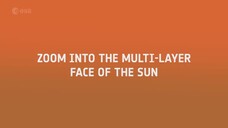Ginger was used as an ingredient in medicine for treating leprosy in medieval Europe, according to a study by Italian and British researchers led by the Sapienza University of Rome, in which Tor Vergata University also took part.
The scientists have found traces of the spice in dental tartar on human remains from the leper colony in Peterborough, England.
The discovery may represent the oldest archaeological evidence in Europe of the curative use of ginger.
The study, published in the journal Scientific Reports, opens up new perspectives in archaeological research into medieval medicine."Ginger is a spice of exotic origin that in the past was difficult to obtain and therefore particularly expensive," explained Elena Fiorin of Sapienza University, who led the study.
"It was used in medicinal preparations because it was believed to have therapeutic properties that were useful for treating various diseases, and in particular leprosy," she continued.
"However, until now no archaeological evidence of the use of ginger in association with leprosy had ever been found," concluded Fiorin.
Riproduzione riservata © Copyright ANSA













